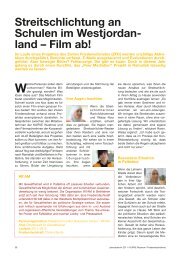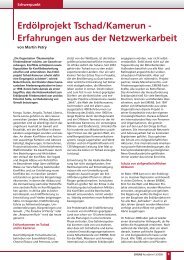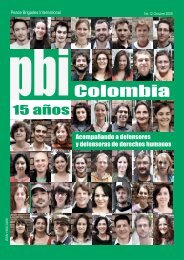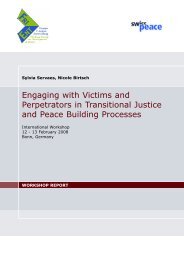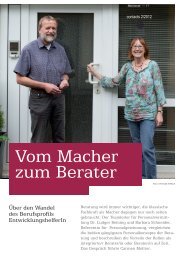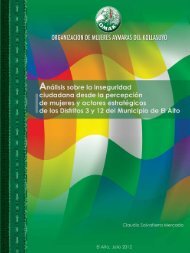Merging Ethiopian Wise-Counsel Mediation and Facilitative ...
Merging Ethiopian Wise-Counsel Mediation and Facilitative ...
Merging Ethiopian Wise-Counsel Mediation and Facilitative ...
- No tags were found...
You also want an ePaper? Increase the reach of your titles
YUMPU automatically turns print PDFs into web optimized ePapers that Google loves.
Stage 6: Strategies of ThreatUnofficial dialogue <strong>and</strong> trust-building measures take place (with the help of a CSO). The people conducting the dialogue don’thave to be leaders of the conflicting parties. They think about trust-building measures (like taking down checkpoints, exchangingprisoners) that will be communicated to their leaders. The dialogue moderators use the facilitative style. As the aim is to build trust,in most cases the conflict in question might not even be addressed directly, but other comparable conflicts serve as examples. Inthese cases, people from other countries who have experiences in conflict resolution might be invited to share experiences. Besidesregaining trust, the objectives are to mitigate fear <strong>and</strong> to decrease the likelihood that the other side might restart hostilities.Sample case:Governmental bodies <strong>and</strong> CSOs work h<strong>and</strong>-in-h<strong>and</strong>; their strengths complement each other in conducting <strong>and</strong> organisingworkshops <strong>and</strong> dialogues on all different levels of society where trust-building measures are needed. They facilitate changes ofperspective in order to have the parties underst<strong>and</strong> that the other side has fears as well (even if on the surface they try to show onlystrength <strong>and</strong> power). Finally, some of the measures are implemented: former property is h<strong>and</strong>ed back to the original owners or theyare compensated, limited cross-border traffic is allowed, dead bodies are h<strong>and</strong>ed over. The atmosphere shifts in a way that peoplefeel the other side is serious about the desire to stop hostilities in the long term.Stage 5: Loss of FaceParties are quite sure that an outbreak of violence is not to be expected in the near future. Still, they believe that the others arecriminals <strong>and</strong> murderers. The government’s perspective is that rule of law has to be exercised; fact-finding missions attempt toinvestigate crimes committed during the “hot” phase of the conflict. Very often, transitional justice mechanisms are put in place,guaranteeing amnesty to a certain extent <strong>and</strong> under certain circumstances in order to reintegrate former combatants. In Rw<strong>and</strong>a,traditional courts are used for this, while South Africa has Truth <strong>and</strong> Reconciliation Commissions.CSOs can have an important role in working towards official apologies. In dialogue groups which need good facilitation,people start to face the past <strong>and</strong> take (at least symbolically) responsibility for the atrocities committed from their own side. Even ifofficials are reluctant to do so, individuals <strong>and</strong> media can start with apologies <strong>and</strong> create certain pressure. Finally, a major step forreconciliation is an official apology, which will only help if it is seen as a real expression of remorse <strong>and</strong> not only as a tactical move.A good example is the when former German Chancellor Willy Br<strong>and</strong> fell down on his knees at a war memorial in Pol<strong>and</strong>. This wasnot part of the official protocol <strong>and</strong> was seen by many as a spontaneous act where he was suddenly overwhelmed by his feelings.In many cases, some sort of compensation needs to be granted, <strong>and</strong> traditional healing ceremonies can be held as well. At thispoint, some parts of society will likely be unhappy with the reconciliation process. They should be engaged with or it will backfire.Sample case:CSOs facilitate cross-river dialogue groups as well as dialogue within their respective communities. In some of these projects,artwork is created in which people do not only deal with their own suffering but their own responsibility <strong>and</strong> the others’ pain aswell. Exhibitions are held, documentaries <strong>and</strong> radio features are broadcasted. The national government agrees with the leadersof both sides to conduct an investigation of crimes committed. Victims can speak out publically, the results of the investigationare made public, modalities of amnesty are agreed on <strong>and</strong> both sides commit to punish the culprits. Compensation is paid to the<strong>Mediation</strong> Training Toolbox89



